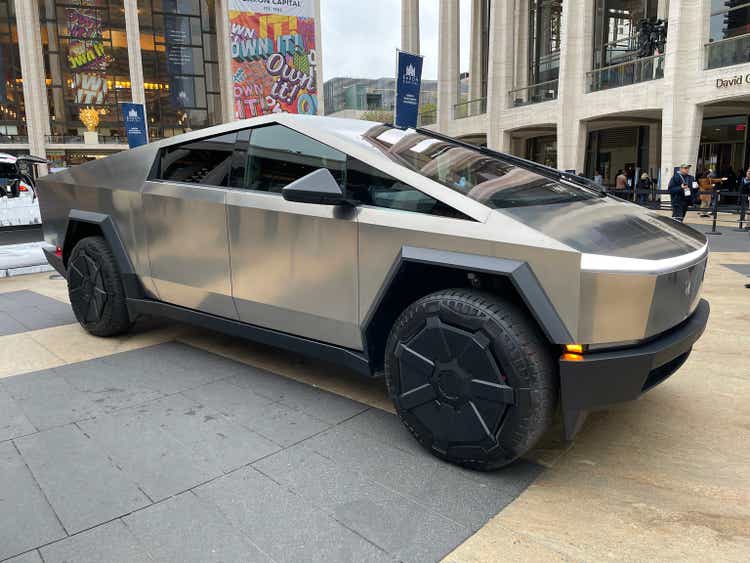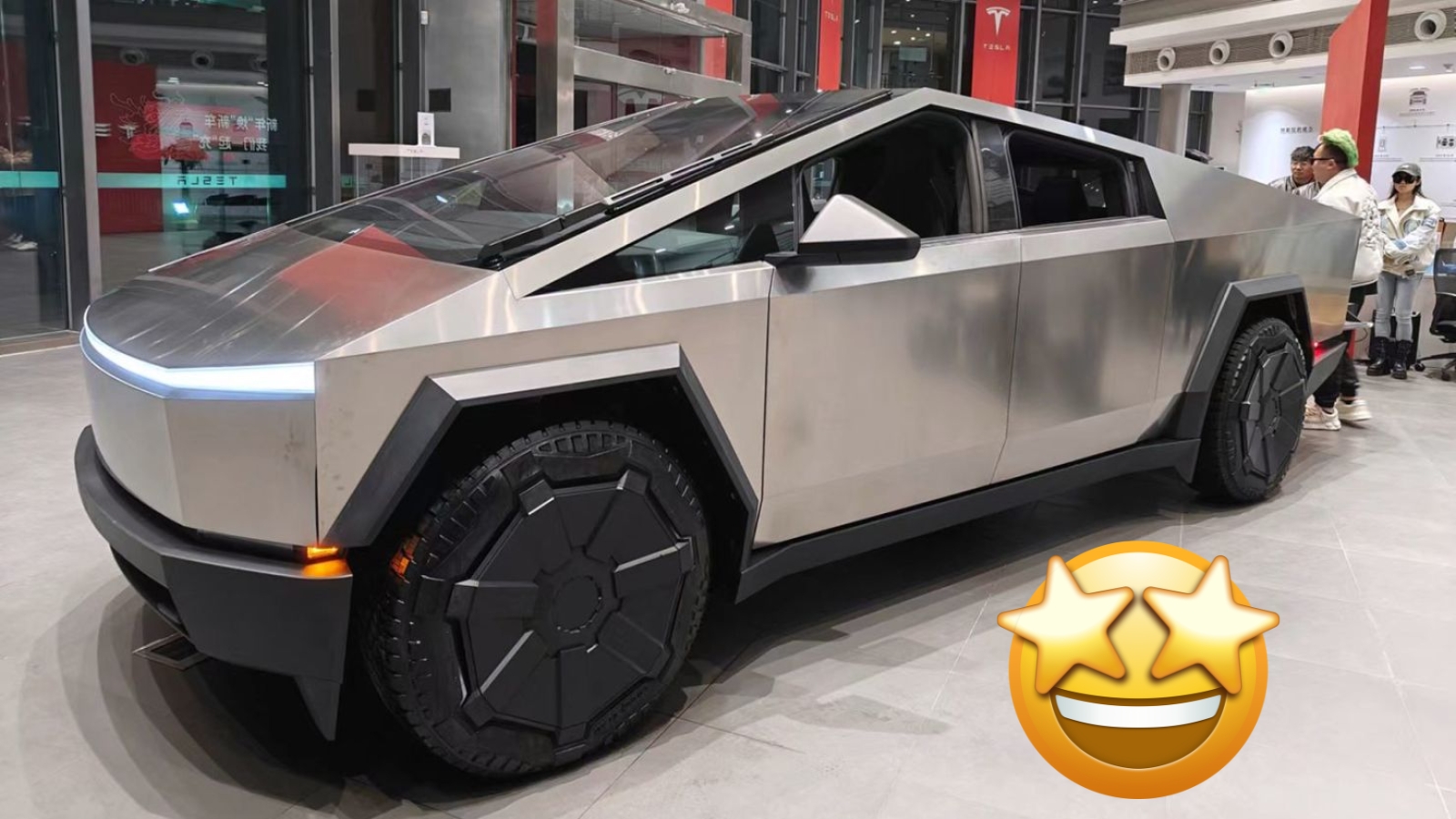Tesla’s ambitious Cyber truck hasn’t quite lived up to expectations, selling around 20,000 units annually instead of the projected 250,000. Now, the electric vehicle giant is seriously considering a smaller, more practical alternative that could shake up the midsize truck market currently dominated by vehicles like the Ford Ranger and Toyota Hi Lux.
Why Tesla Needs a Smaller Electric Truck
The writing is on the wall for Tesla’s current Cyber truck strategy. Despite initial excitement and a massive backlog of pre-orders, the angular electric pickup is operating at just 10% of its installed production capacity. The main culprit? Price. Starting at $72,235 for the Long Range model, the Cyber truck has priced itself out of reach for many potential buyers.
Tesla VP of Vehicle Engineering Lars Moravy recently hinted at the company’s shift in thinking during an investor event. “We always talked about making a smaller pickup,” he explained. “I think in the future, as more and more of the robotaxi comes into the world, we look at those options and we think about, OK, that kind of service is useful not just for people, but also for goods.”

The Current Cyber truck’s Struggles
The full-size Cyber truck faces several challenges that a smaller version could potentially address:
Pricing Issues: The current $72,235 starting price puts it in luxury territory, far from the mainstream truck market.
Size Limitations: At 223.7 inches long and weighing nearly 6,900 pounds, it’s simply too large for many international markets and urban environments.
Market Reception: While some love its bold design, others find it too polarizing for everyday use.
What a Mini Cyber truck Could Offer
A smaller Tesla pickup would likely target the midsize truck segment, competing directly with popular models like the Ford Ranger, Toyota Hi Lux, Chevrolet Colorado, and Nissan Frontier. This segment represents a massive opportunity, especially as it currently lacks electric options.
Key Advantages of a Smaller Design
Affordability: A mini Cyber truck could potentially start under $50,000, making Tesla’s electric truck technology accessible to a broader audience.
Urban Friendliness: Smaller dimensions would make it more practical for city driving and parking, addressing a key limitation of the full-size model.
International Markets: Many global markets prefer smaller trucks due to narrower roads and different usage patterns.
Utility Focus: Instead of focusing on extreme performance like the 834-horsepower Cyber beast, a smaller truck could prioritize practicality and efficiency.
Market Competition is Heating Up
Tesla won’t be alone in this space for long. Several automakers are preparing their own midsize electric trucks:
Ford’s Midsize Electric Pickup
Ford plans to launch a midsize electric pickup by 2028, featuring lithium-iron phosphate battery cells from CATL. CEO Jim Farley called it “one of the most exciting” products he’s seen in 40 years in the industry.
Kia’s Electric Truck
Kia is developing a midsize electric pickup promising “best-in-class interior and cargo space, a robust towing system, off-road capabilities and advanced infotainment and safety features.”
Ram’s Compact Electric
Ram showed dealers a concept for a smaller, more affordable electric truck in 2023, with potential launch sometime next year.
Technical Specifications and Features
| Feature | Current Cybertruck | Potential Mini Cybertruck |
|---|---|---|
| Starting Price | $72,235 | Estimated $45,000-55,000 |
| Length | 223.7 inches | Estimated 200-210 inches |
| Towing Capacity | 11,000 pounds | Estimated 7,000-8,500 pounds |
| Range | 320-350 miles | Estimated 300-350 miles |
| Payload | 2,500 pounds | Estimated 1,500-2,000 pounds |
The Robotaxi Connection
Interestingly, Tesla sees potential synergy between a smaller pickup and its autonomous vehicle ambitions. Moravy suggested the mini Cyber truck could serve dual purposes – personal transportation and goods delivery through Tesla’s planned robotaxi network.
This approach makes sense from a business perspective. A smaller, more affordable truck could help Tesla maintain volume while its autonomous technology develops. The same platform could potentially serve both individual customers and commercial fleet operators.
Design Philosophy: Utility Over Flash
Unlike the current Cyber truck’s focus on mind-bending performance and futuristic aesthetics, a smaller version would likely emphasize practical utility. Tesla has already started shifting its marketing approach, moving away from “conquering other planets” messaging toward more realistic work-use scenarios.
Expected Features
Simpler Design: Less polarizing styling that appeals to mainstream truck buyers
Practical Interior: Focus on durability and functionality over high-tech minimalism
Work-Oriented Options: Features tailored for contractors, small business owners, and outdoor enthusiasts
Competitive Pricing: Positioned to compete with traditional midsize trucks
Timeline and Availability
While Tesla hasn’t announced official timelines, industry experts predict a mini Cyber truck could debut between 2025 and 2026. However, given Tesla’s history of optimistic projections, 2027-2028 might be more realistic.
The delay could actually work in Tesla’s favor, allowing the company to learn from the current Cyber truck’s challenges and develop a more market-ready product.
Global Market Potential
A smaller Tesla truck could finally give the company access to markets where the full-size Cybertruck simply won’t work. Australia, where the Ford Ranger and Toyota HiLux dominate, represents a particularly attractive opportunity. These markets prioritize fuel efficiency, practicality, and affordability over raw performance.
What This Means for Truck Buyers
For consumers, a mini Cyber truck could represent the sweet spot between Tesla’s innovative electric technology and practical truck needs. It would likely offer:
- Tesla’s proven electric powertrain technology
- Advanced driver assistance features
- Competitive towing and payload capabilities
- More affordable pricing
- Better urban maneuverability
The key will be whether Tesla can deliver this vehicle at a competitive price point while maintaining the quality and features customers expect.
Industry Impact
A successful smaller Tesla truck could accelerate the entire industry’s shift toward electric midsize pickups. Traditional automakers are already responding to Tesla’s influence, and a more affordable, practical Tesla truck would likely spur even faster development of competing models.
FAQs
Q. When will Tesla release a mini Cybertruck?
A. No official date has been announced, but industry experts expect 2025-2028.
Q. How much will a smaller Tesla truck cost?
A. Estimates suggest $45,000-55,000, significantly less than the current $72,235 starting price.
Q. Will it compete with Ford Ranger and Toyota HiLux?
A. Yes, Tesla specifically aims to target the midsize truck segment dominated by these models.
Volkswagen Faces Major Setback After New US Tariffs Introduced
